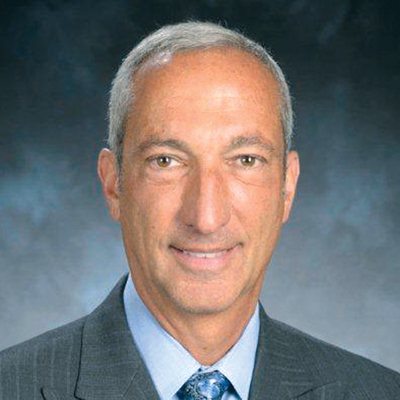Risk: Sustainability
A Renewed Focus
Insurance sustainability measures to concentrate on investment, partners and companies. Special Risk Section sponsored by LexisNexis.
- Timothy Darragh
- April 2020
-





Key Points
- The Big Picture: Insurers are not only making their physical operations greener, they are beginning to redirect their institutional investments away from fossil fuel enterprises.
- Another Factor: The industry is reconsidering the risk of underwriting fossil fuel lines that contribute to global warming.
- What’s Ahead: Insurers and regulators see responsible investing and underwriting as a mandate, not a political talking point.
Insurers and regulators are intensifying their focus on climate change and sustainability in 2020. Look for those efforts to take a variety of forms this year as companies make their physical plants and operations greener and regulators focus on developing resiliency strategies and partnerships to leverage their members' strengths to take on the increasing risk of climate change.
At the top of that agenda, from both within and the outside, will be efforts to redirect insurers' institutional investments away from fossil fuel enterprises. That will be happening as insurers continue to reassess the risk of underwriting those industries.
Although not a new effort, the movement away from coal, in particular, got a boost in the most recent letter to investors from BlackRock, the world's largest asset manager, said Peter Bosshard, finance program director for The Sunrise Project, an Australian project aimed at shifting the global finance system away from fossil fuels to clean energy.

Our regulators, for instance, are increasingly focused and interested in the exposure that insurers have to climate risk, and what steps we are taking to address the issue.
Thomas Leonardi
AIG
BlackRock, he said, is among the biggest shareholders of insurers that underwrite coal operations, and according to the investor letter, is now “intensifying its focus and engagement with companies on sustainability-related risks.”
According to BlackRock's investor site, as of Dec. 31, it had $7.4 trillion under management. “BlackRock has identified exposure to coal as a major issue at U.S. insurers, and we expect the asset manager and shareholder to engage vigorously for a credible, accelerated low-carbon transition with the management of insurance companies, which continue to insure and invest in coal and other fossil fuels,” Bosshard said. In a recent white paper, BlackRock also found insurers are “severely underinvested in renewable power.” Likewise, U.S. automobile insurers are underinvested in electric vehicles, it said.
Insurers also are reconsidering the risk of underwriting fossil fuel lines that contribute substantially to global warming. “The risk for companies that are involved with fossil fuel, especially coal and tar sands, is changing pretty quickly,” said Washington state Insurance Commissioner Mike Kreidler. “Insurers should and do monitor their risk portfolios to avoid being overly exposed in any risk or geographical area.”
Companies are getting the message. “You have to go from fossil fuel to something else” even as fossil fuel, including coal, is still needed, AIG President and CEO Brian Duperreault said at the World Economic Forum in Davos, Switzerland. Executive Vice President Thomas Leonardi earlier this year announced AIG is developing a sustainability agenda “intended to help 'future-proof our communities.'
“This plan addresses expectations from across many of our key stakeholders, including investors, regulators, clients and employees,” he said. “Our regulators, for instance, are increasingly focused and interested in the exposure that insurers have to climate risk, and what steps we are taking to address the issue.”
Like other companies, AIG also has formed a climate change working group, which is identifying how it can improve sustainability across its own operations, he said. This year, Leonardi said, AIG will launch an Employee Sustainability Network, where employees can take action at a more local, grassroots level.
Following the voluntary, widely used method for climate-related financial reporting known as Task Force on Climate-Related Financial Disclosures, AIG last year reported having an investment portfolio of $314 billion in 2018. Other companies recently accelerated their transition away from fossil fuels. Axis Capital Holdings Ltd. said it will, in most cases, eliminate new insurance and reinsurance coverage for companies that engage in thermal coal and oil sands-related activities beginning this year. It also will refrain from making new investments in those companies.
A month later, Axa S.A. said it would ban most business to new projects using substantial amounts of coal and redirect its investments to those that will limit global warming. QBE, Hartford and Chubb announced similar plans in 2019. Liberty Mutual also is shying away.
Environmentalist Bill McKibben, whose 1989 book, The End of Nature, has been considered the first book for a general audience that outlines the perils of climate change and the need for sustainability, said the public is not satisfied with the pace of change. He said climate protests directed toward insurers will continue. “There will be ongoing pressure of all kinds on these companies until they stop funding and underwriting the fossil fuel industry,” he said. “Insurance is the discipline we ask to analyze risk in our system, and it has failed in that job, aiding and abetting the greatest risk the planet has ever faced.”
Ben Carey-Evans, an analyst at GlobalData Technology in London, seconded McKibben. The protests known as the Extinction Rebellion, which targeted insurance companies on Fenchurch Street in London in 2019, will continue, he said.
“The pressure is unlikely to decline due to the prominence of the issue and insurance's traditionally close links to nonrenewable energy, so we expect action from insurers to continue into 2020,” Carey-Evans said. Change also is being promoted by regulators.

BlackRock has identified exposure to coal as a major issue at U.S. insurers, and we expect the asset manager and shareholder to engage vigorously for a credible, accelerated low-carbon transition with the management of insurance companies, which continue to insure and invest in coal and other fossil fuels.
Peter Bosshard
The Sunrise Project
The Regulation Factor
The National Association of Insurance Commissioners since 2009 has been gathering data from insurers through its Climate Risk Disclosure Survey, which now captures climate activity information from insurers covering about 70% of the domestic market.
Kreidler, chairman of the NAIC's Climate Risk and Resilience Working Group, said regulators this year are asking the 1,200 companies that respond to its survey to refer to the Task Force on Climate-Related Financial Disclosures guidelines when completing the survey. The working group also is considering developing a list of frequently asked questions to help regulators answer lawmakers' questions about catastrophe risk, insurance and resilience.
Other regulatory plans for 2020 include the drafting of an International Association of Insurance Supervisors applications paper to guide regulators on how to account for climate in the future, Kreidler said. That paper is expected to be completed at the IAIS meeting in Chile this fall, he said. To learn more about what insurers are already doing and reporting on their approach to climate change, regulators are encouraging two separate initiatives to analyze the information that insurers already have provided in the annual NAIC survey over the past 10 years, Kreidler said. The American Academy of Actuaries and NAIC's Center for Insurance Policy and Research are conducting these initiatives, he said.
Among state regulators, California's Department of Insurance has taken the lead in addressing sustainability. Last year, it appointed Mike Peterson deputy commissioner for climate and sustainability—the first position of its kind in the nation.
He dove into the issue, working with Insurance Commissioner Ricardo Lara and the United Nations Environment Program in a yearlong effort to develop a Sustainable Insurance Roadmap to confront California's climate risks. According to the department, it is the first time the United Nations partnered with an American state to create a sustainable insurance strategy and action plan to tackle climate change.
The plan, it said, could inspire new insurance products to promote cooler streets and renewable energy. Innovations such as insurance covering coral reefs protecting bay side villages in Mexico and mangrove trees sheltering the coastline in Southeast Asia could be brought here and adapted for California's wildfire-prone areas or New Jersey's exposed shoreline communities, Peterson said.
Peterson said among the most powerful messages he has heard so far is how insurance companies can become responsible investors, as the institutional investment houses and street protesters demand. A second awakening was how insurance department officials came to see how insurance companies can underwrite insurance policies to cover construction materials and building plans that support resiliency and sustainability, Peterson said.
Again, such a concept is “not new,” he said, but it's “rare” among California insurers. Expect the roadmap to be released in late summer or early fall, Peterson said. Across the spectrum, insurers and regulators see the issue as a mandate, and not a political talking point. “Even in places in the U.S. where there is a disinterest in talking about climate change,” Kreidler said, “regulators and elected officials are doing much more to seek to mitigate the effects of climate change.”